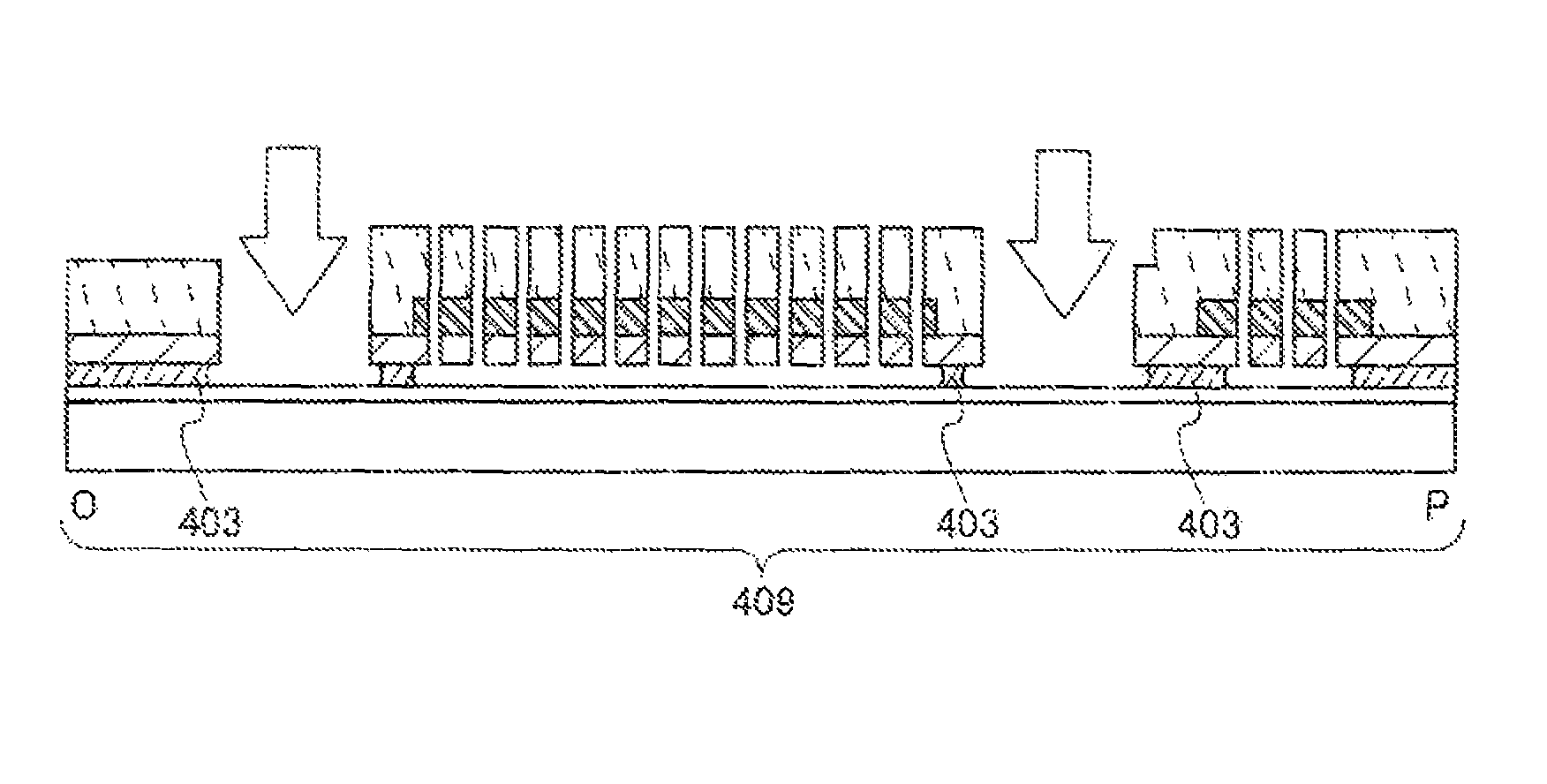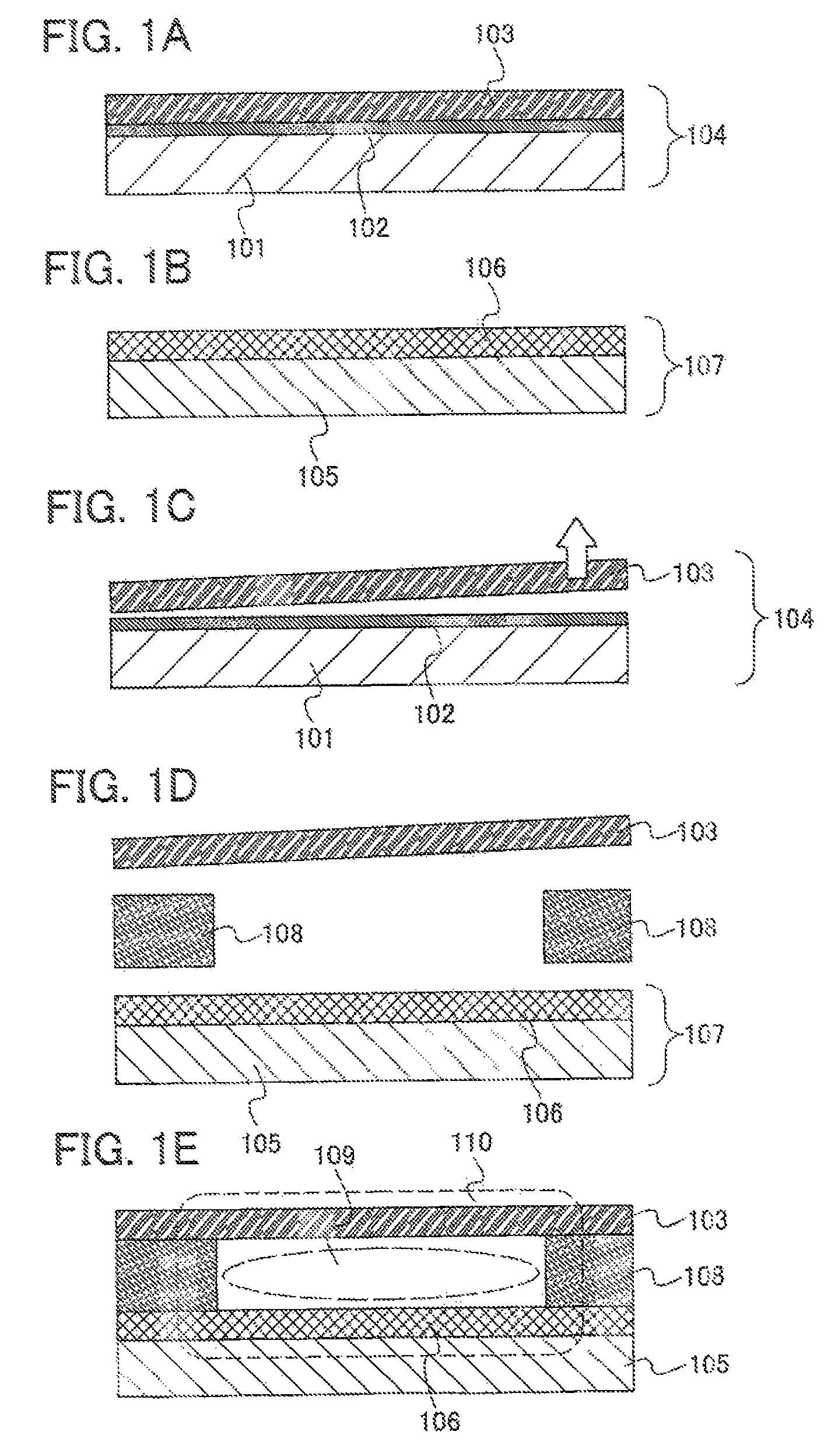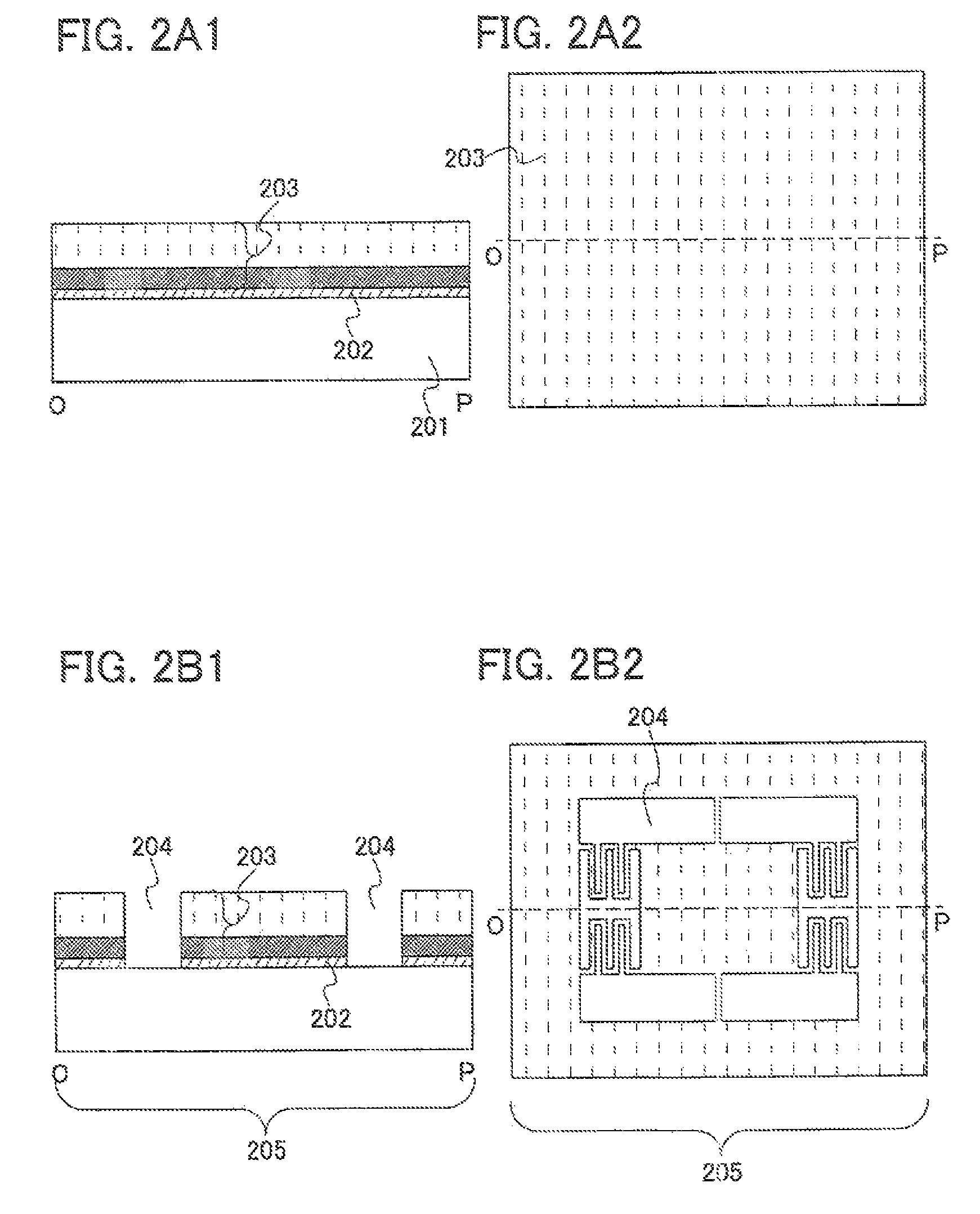Microstructure, micromachine, and manufacturing method of microstructure and micromachine
a manufacturing method and micromachine technology, applied in the direction of microstructure device assembly, microstructure, transportation and packaging, etc., can solve the problems of reducing yield, buckling (also referred to as sticking) of the microstructure, and requiring an extremely long time, so as to reduce reduce the generation of various defects caused by the process of sacrificial layer etching. , the effect of reducing the time required for manufacturing
- Summary
- Abstract
- Description
- Claims
- Application Information
AI Technical Summary
Benefits of technology
Problems solved by technology
Method used
Image
Examples
embodiment mode 1
[0066]In Embodiment Mode 1, a manufacturing method of a microstructure of the present invention will be described.
[0067]First, with reference to FIGS. 1A to 1E, a manufacturing method of a microstructure of the present invention and a separation method which is important in carrying out the manufacturing method will be described. Here, the drawings are substrate cross sectional views.
[0068]In order to manufacture the microstructure of the present invention, a separation layer 102 and a first layer 103 are formed over a first substrate (also referred to as a first support substrate) 101 first, as shown in FIG. 1A so that a substrate including the first layer 104 is manufactured. Then, as shown in FIG. 1B, a second layer 106 is formed over a second substrate (also referred to as a first protective substrate) 105 to manufacture a substrate including the second layer 107.
[0069]Then, as shown in FIG. 1C, the first layer 103 is separated from the substrate including the first layer 104, u...
embodiment mode 2
[0086]Embodiment Mode 2 will concretely describe a manufacturing method of the microstructure described in Embodiment Mode 1, with reference to FIGS. 2A1 to 4C2. Note that the drawings on the right side are top views of substrates and the drawings on the left side are cross sectional views taken along a dashed line O-P of the top views.
[0087]First, a processing method of one substrate having a first layer will be described with reference to FIGS. 2A1 and 2B2.
[0088]As shown in FIGS. 2A1 and 2A2, a separation layer 202 is formed over a first substrate (also referred to as a first support substrate) 201. Here, various substrates such as a substrate having an insulating property, for example, of glass, quartz, or plastic, or a substrate having a conductive property such as metal, as well as a substrate having a semiconductor property such as a silicon substrate can be used for the first substrate 201.
[0089]The separation layer 202 is formed by a CVD method, a sputtering method, or the l...
embodiment mode 3
[0118]In Embodiment Mode 3, an example for manufacturing a microstructure, which employs the method described in Embodiment Mode 1, will be described with reference to FIGS. 5A to 9C. Here, the drawings are cross sectional views.
[0119]As shown in FIG. 5A, a first separation layer 302 and a first layer 303 are formed over a first substrate (also referred to as a first support substrate) 301 to form a substrate including the first layer 304. As shown in FIG. 5B, the first layer 303 is separated from the substrate including the first layer 304 at an interface of the first separation layer 302.
[0120]Next, a first spacer layer 306 is selectively formed over a second substrate 305, and a second spacer layer 308 is selectively formed over a third substrate 307. The second substrate 305 including the first spacer layer 306 and the third substrate 307 including the second spacer layer 308 are attached to each other so as to interpose the first layer 303 therebetween (FIG. 5C).
[0121]Thus, the...
PUM
| Property | Measurement | Unit |
|---|---|---|
| thickness | aaaaa | aaaaa |
| thickness | aaaaa | aaaaa |
| thickness | aaaaa | aaaaa |
Abstract
Description
Claims
Application Information
 Login to view more
Login to view more - R&D Engineer
- R&D Manager
- IP Professional
- Industry Leading Data Capabilities
- Powerful AI technology
- Patent DNA Extraction
Browse by: Latest US Patents, China's latest patents, Technical Efficacy Thesaurus, Application Domain, Technology Topic.
© 2024 PatSnap. All rights reserved.Legal|Privacy policy|Modern Slavery Act Transparency Statement|Sitemap



